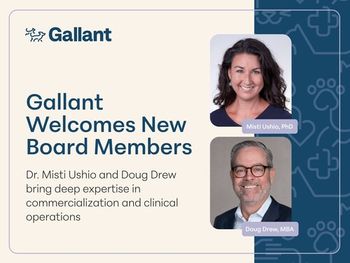
Hanging with Hafen: Thoroughly understand the decision to build a new practice
To "grok" means to fully understand something. Before you head into the process of building a new veterinary practice, grok it.
“Design is a funny word. Some people think design means how it looks. But of course if you dig deeper it's really how it works. To design something really well, you have to get it. You have to really grok what it is all about. It takes a passionate commitment to really thoroughly understand something, chew it up, not just quickly swallow it. Most people don't take the time to do that.” -Steve Jobs
I recently read I, Steve, a book of Steve Jobs' quotes. It was an amazing and inspiring way to spend an evening. The book caused me to reaffirm what was important to me, but most importantly it challenged me to look at what I do day to day. Just as you wear a label, so do I: You're a veterinarian, I'm an architect. You have the AVMA's oath, and I have an implied code of ethics. We share a commitment to do our best. For me, that means designing the best possible veterinary hospital. That may sound rather simplistic, but Jobs would require that I really grok it too, as defined by Robert A. Heinlein in Stranger in a Strange Land. And that's more difficult than it sounds.
In order for you to consider building a new hospital or expanding your current one, you too have to grok it. Using a supposed expert like me should take some of the pressure off, but the bottom line is that you have to understand the real motivation behind why you are building a hospital. Is it because you want to make more money? Maybe investing in stocks and bonds would be simpler. Is it because you want to be important? What would that actually bring you? Is it because you want to provide the best possible veterinary medical care? That's very professional. Maybe it is because you want to be challenged, to feel like you are making a difference, to feel like you are getting up in the morning and doing the best you can with the gray matter that you were given.
So what does that have to do with your building? Is your facility just four exam rooms, a tub table in treatment, a digital x-ray and an operatory suite with a new LED surgery light? Yes, and no. The architect Le Corbusier wrote a book called Vers un Architecture in 1927 that heralded the new modern era in architecture. In it he said: “A house is a machine for living in.” This was in the midst of both the Jazz Age and the Machine Age. It was a time when possibilities seemed unlimited. In today's world, machines are not quite a sexy as a new Duesenberg automobile was then (except for a new Apple iPad). But like Le Corbusier's house, your hospital really is a “machine” for practicing veterinary medicine. And if you really grok it, you will know what that means on every different level.
For you and your staff, your building has to at minimum not impede you. It needs to help you. It should speed you on your way. It should minimize wasted movement and enable you to easily access and use tools, supplies and technologies. If you want to design a new facility, you need to know how your current facility flows. In other words, how you and your staff can most effectively perform required day-to-day tasks and procedures. You need to know what kind of equipment you have, or hope to have, and how it should be housed. Or you need to hire an “expert” who knows these things.
In the movie Iron Lady, the story of Britain's infamous prime minister, Margaret Thatcher talked about her generation being interested in “doing” not “feeling.” I think she was right. How you feel is all well and good, but what you do is a higher benchmark. As such, your building has to help you “do” things. And the most successful buildings help you do that by minimizing distractions (like errant noise and odor), encouraging communication and cooperation among the staff (with fun and engaging conference and break rooms) and by providing respite by way of daylight and views of sylvan landscapes.
What constitutes a successful visit to your practice for your clients? That you saw them without delay? That your place didn't smell weird? That Fluffy, a prized Peekapoo, was fixed? Or that clients didn't feel fleeced when they got the bill? Maybe, but hopefully there is something more. Ideally your clients should feel cared for, they should feel secure, and they should believe that somebody wants to listen to them and will do something to make things better. How can your facility help with this? Besides being clean, orderly, and efficient, is your hospital inviting, engaging, entertaining, secure, and hospitable? Are your exam rooms comfortable, embracing, even empowering? What does your facility need to do to make your clients feel good about their visit?
If you were going to grok the design of the client experience, what would be involved? The answer could include a comfortable blanket for their Peekapoo to sit on, pleasant conversation with fellow clients, accessible and immediate attention from your staff, a good cup of coffee, and appropriate and easy information about what is happening to their pet. For the pets, it's about more than a clean and dry cage. It's about trying to de-stress the animals' experience, to minimize pain, to provide comfort, to offer the feeling of security, and even possibly to entertain or distract.
For example, what would the ideal animal holding environment look like? It should be big enough to offer comfort and adequate space. It should be warm enough in winter; be well ventilated; and have a secure corner, a diurnal cycle, or daylight and some kind of view. To truly grok your facility you, working with your architect, need to figuratively disassemble your facility, identify the critical functions, prioritize, test out adjacencies, and differentiate between what you “want to have” and what you “gotta have.” Then these pieces need to be reassembled into something greater than their individual parts.
This can take time, and it will certainly take effort. An expert can help, but ultimately if you want the best possible facility for yourself, staff, clients, and patients, you have to put the time and effort into truly knowing what you need. Let me leave you with another Steve Jobs' quote from his book. “We're not going to be the first to this party, but we are going to be the best.” Your situation is the same. You certainly aren't going to be the first veterinary practice in your city, market, or block, but if you take the time to grok through it, you can create a building and practice that are the best.
Newsletter
From exam room tips to practice management insights, get trusted veterinary news delivered straight to your inbox—subscribe to dvm360.






